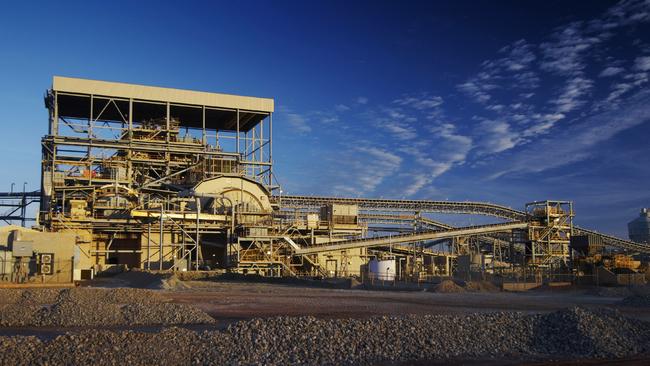Newcrest slashes dividend, says it won’t pay for extra Havieron stake
The gold producer’s shares rose on a relief rally as the company tipped far stronger production for the current financial year.

Newcrest Mining says it won’t pay $US60m ($87m) for an additional 5 per cent stake in its emerging Havieron gold project, as the company slashed its final dividend after booking a sharp fall in annual profit.
The miner on Friday revealed net profit for the year fell 25 per cent, to $US872m.
Newcrest said the price tag put on the stake by an independent valuer did not meet its return hurdle requirements, and the company was content to sit on its 70 per cent holding in Havieron.
The comments came as the gold major declared a US20c a share fully franked final dividend for the year, half the amount returned to shareholders at the same time in 2021.
Newcrest managing director Sandeep Biswas said on Friday the decision on Havieron should not be read as a loss of interest in the emerging gold deposit.
“Our enthusiasm for the project will be dictated by the financial outcomes that come out of the feasibility study,” he said. “We have a capital allocation criteria. If something doesn‘t fit that criteria we’ve got to be pretty hard-nosed about whether we invest that money or not, because we’ve got so many alternative options.”
Newcrest said the fall in its net profit was largely due to lower production at its flagship Cadia mine in NSW, where the company conducted a major replacement at upgrade on its crushing mill, along with unplanned problems at its Lihir mine in PNG.
But, in positive news for the company’s shareholders, Newcrest said a potentially significant problem with one of the ventilation shafts at its Cadia mine, identified earlier this month, had been resolved without significant loss of production, with the mine’s underground operations now returned to full capacity.
Newcrest booked earnings before interest and tax of $US1.3bn for the year, down 26 per cent, on the production of 1.96 million ounces of gold, down 7 per cent for the year. The company’s all-in sustaining cost per ounce rose 14 per cent for the year to $US1043.
The company said it expected to return to production levels above 2 million ounces in the financial year, however, issuing output guidance of 2.1 to 2.4 million ounces of gold and 135,000 to 155,000 tonnes of copper.
Mr Biswas also signalled Newcrest’s interest in extending its profile as a copper producer.
“We are very pleased to have a substantial and increasing exposure to copper, a critical metal of the future with a positive long term outlook that will allow us to participate in the potential opportunities presented by a global shift to decarbonisation,” he said.
Mr Biswas said the company was not “specifically” hunting for new copper assets, however.
“We are fortunate that we have Cadia, that we have Red Chris, we have Golpu. So we‘ve got plenty of potential to expand our copper. I’ve always been bullish about copper even when it wasn’t fashionable to be so and remain that way.”
Mr Biswas said that, although the company had been hit with rising cost inflation and some operational issues, the company had still delivered a “strong” performance for the year.
“We were particularly pleased with our costs trending lower in the second half of the year, with Cadia achieving its lowest ever annual All-In Sustaining Cost of negative $US124 per ounce,” he said. “Our balance sheet has also remained extremely robust with significant liquidity available to support our growth aspirations.”
Newcrest finished June 30 with net debt of $US1.33bn, and a gearing ratio of 10.2 per cent.
Newcrest flagged cost inflation of around 6 to 8 per cent across its suite of operations this financial year, but lowered its average AISC cost guidance to about $US1000 a tonne on improved production figures.
Newcrest shares posted strong gains – ending up 3.6 per cent at $19.35 – after the company released its annual results in what analysts described as a “relief rally” after it beat expectations.
Barrenjoey analyst Daniel Morgan said the return to production at Cadia had allayed fears of an extended outage.

